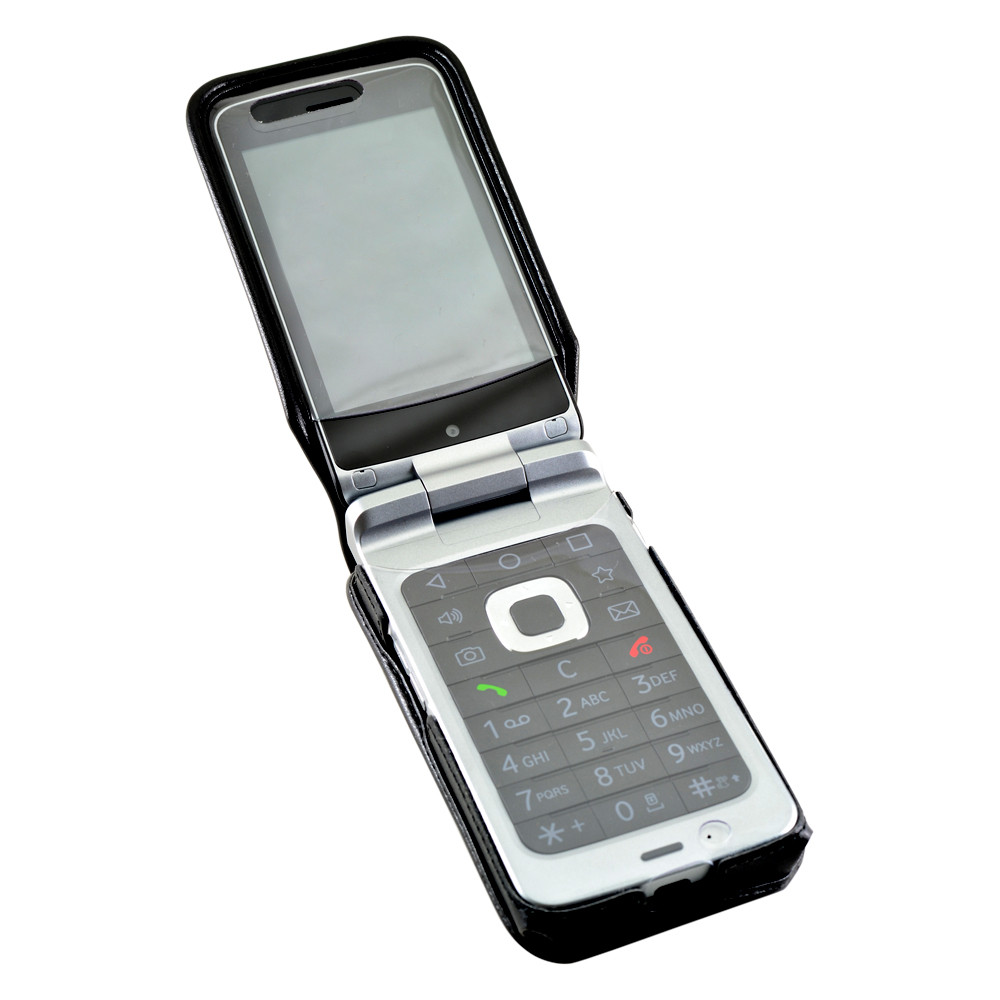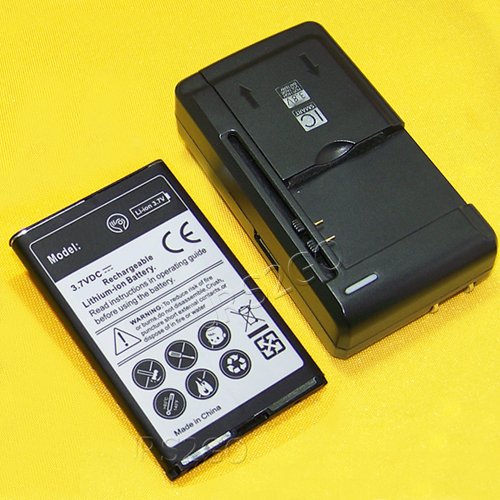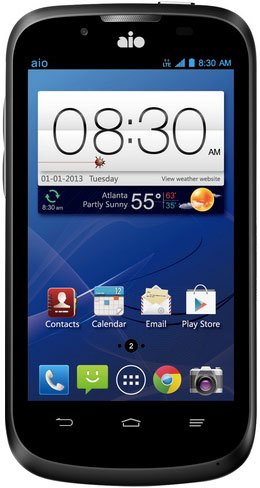| Main display: TFT 64k colors 240 x 320 px (2.80″) 143 ppi |
| Qualcomm Snapdragon 210 8909 1,10 GHz [Number of cores: 4] |
| Li-Ion 1500 mAh |
| Internal memory: 4 GB |
| RAM memory: 512 MB |
| 2 Mpx, 1600x1200 px |
DOWNLOAD INFORMATION: To download a user guide, please go to the category of your equipment, choose the brand of your equipment, then click on the model which you are looking for. Concord II (T-Mobile) - User Manual and Safety Information; ZTE Cricket Engage Series. Cricket Engage - User Manual; Cricket Engage LT - User Manual; Cricket Engage MT - User Guide; ZTE Cymbal Series. Cymbal LTE (Verizon Wireless) - Operating Instructions; Cymbal T LTE - Phone and Feature Guide; Cymbal T LTE - Operating Instructions; ZTE D. This online tool will help you identify and resolve problems with your ZTE Cymbal LTE. Home Support ZTE ZTE Cymbal LTE Troubleshooting Troubleshooting Assistant for ZTE Cymbal LTE. Select Your Device Brand/Os. 24/7 automated phone system: call.611 from your mobile. Zte Manuals; Cell Phone; Cymbal LTE; User manual; Zte Cymbal LTE User Manual. First Time When you first power on your phone after you purchase it or reset it to factory settings (see Reset), you need to do some settings before using it. Select the language and then follow the prompts to set up your phone.
Your phone’s battery should have enough power for the phone to turn on, find a signal, and make a few calls. You should fully charge the battery as soon as possible. Use only approved chargers and cables. The use of unapproved accessories could damage your phone or cause the battery to explode. Connect the adapter to the charging. Related Manuals for Zte Cymbal LTE. Cell Phone Zte Chorus User Manual 33 pages. Cdma2000 1x evdo digital mobile phone. Cell Phone Zte Cricket Engage MT User Manual 36 pages. Cdma2000 1x evdo digital mobile phone. Cell Phone Zte C79 User Manual 83 pages. Cdma 1x digital mobile phone. USER MANUAL www.zteusa.com Z930L Z53. About This Manual. When you first get your new phone, you’ll need to charge the battery. Use only ZTE-approved chargers and cables. The use of unapproved accessories could damage your phone.
| Other names: | Z233VL |
| Dimensions: | 108,2 x 55,37 x 18,54 mm |
| Weight: | 130,12 g |
| Keyboard standard: | Yes |
| Standard battery: | Li-Ion 1500 mAh |
| Stand-by (max.): | 2G: 240 h |
| Talk time (max.): | 2G: 8 h |
| Internal memory: | 4 GB |
| RAM memory: | 512 MB |
| Memory cards: | microSD, microSDHC, max 32 GB |
| Operating system: | Linux |
| Processor: | Qualcomm Snapdragon 210 8909 1,10 GHz Number of cores: 4 |
| GPU: | Adreno 304 |
| Main display: | TFT 64k colors 240 x 320 px (2.80″) 143 ppi |
| Addidtional display: | Mono / TFT 64 x 128 px (0,96″) |
| Touchscreen: | Yes |
| Digital camera: | 2 Mpx, 1600x1200 px |
| Video: | MPEG4, H.263, H.264 |
| MP3: | Yes |
| EMS: | - |
| MMS: | Yes |
| Speakerphone: | Yes |
| Voice dial: | - |
| Call forwarding: | Yes |
| e-mail client: | Yes |
| RSS Reader: | - |
| IrDA: | - |
| Bluetooth: | Yes, v4.1 |
| GPRS: | Yes |
| EDGE: | Yes |
| WiFi: | Yes, v802.11 b/g/n |
| Hotspot WiFi: | - |
| DLNA: | - |
| WAP: | Yes, v2.0 |
| xHTML: | Yes |
| HSCSD: | - |
| HSDPA: | Yes |
| HSUPA: | Yes |
| HSPA: | Yes |
| HSPA+: | Yes |
| LTE: | Yes |
| NFC: | - |
| WiMAX: | - |
| USB | Yes, v2.0 |
| HDMI | - |
| GPS: | Yes |
| GLONASS: | - |
| Push To Talk: | - |
| Java: | - |
| Calendar: | Yes |
| Watch: | Yes |
| Alarm: | Yes |
| Organizer: | Yes |
| Calculator: | Yes |
| Polyphony: | Yes |
Mobile terms glossary
The GPU (Graphics Processing Unit) is a specialized circuit designed to accelerate the image output in a frame buffer intended for output to a display.
GPUs are very efficient at manipulating computer graphics and are generally more effective than general-purpose CPUs for algorithms where processing of large blocks of data is done in parallel.
Modern smartphones are equipped with advanced embedded chipsets that can do many different tasks depending on their programming. GPUs are an essential part of those chipsets and as mobile games are pushing the boundaries of their capabilities, the GPU performance is becoming increasingly important.
Bluetooth is a low-power wireless networking technology operating in the 2.4 GHz unlicensed Industrial, Scientific and Medical (ISM) band. There are two classes of Bluetooth device — Class 1 devices have higher output power and a range of about 100 meters, and Class 2 devices have lower power and a range of about 10 meters. Bluetooth enables ad hoc networking of up to eight devices (supporting voice and data). The Bluetooth Special Interest Group (SIG) was founded in 1998 by IBM, Intel, Ericsson, Nokia and Toshiba, and is supported by more than 2,500 organizations. The Bluetooth v.1.0 specification was ratified and published in 1999 and supported data rates of up to 1Mbps. Bluetooth Version 2.1, along with its enhanced data rate (EDR) specification, was ratified in March 2007, supporting data rates of up to 3 Mbps, and simplified “pairing” — the process used for securely linking one Bluetooth device to another. It also reduced power consumption, doubling the battery life of headsets and other mobile devices for which the Bluetooth radio consumes a large percentage of the power budget. Version 3.0 (“Seattle”) was adopted by the SIG in April 2009, and the specification included Wi-Fi as an alternative transport layer for large volumes of data, supporting data rates of up to 24 Mbps. The SIG also adopted “Bluetooth low energy,” a new ultra-low-power variant, previously referred to as Ultra Low Power (ULP) Bluetooth and Wibree.
GPRS stands for General Packet Radio Service and was the first popular data standard for mobile phones.
GPRS was used for WAP and MMS messages and offered modest connection speeds - typically 30-40 Kbit/s, although the theoretical maximum is 115 Kbit/s. GPRS is known as a 2.5G technology.
One of the early advantages of GPRS is that it s always on so no connection handshake is needed. It is still very popular, especially in the developing world.
The name of EDGE in full is Enhanced Data rates for GSM Evolution. This is a 2.75G technology further developed from the 2G and 2.5G technologies. Its data transmission speed is higher than that of GPRS and is closer to 3G technology.
Wi-Fi is a WLAN (Wireless Local Area Network) technology. It provides short-range wireless high-speed data connections between mobile data devices (such as laptops, PDAs or phones) and nearby Wi-Fi access points (special hardware connected to a wired network).
The older variant of Wi-Fi, 802.11g, is capable of providing speeds of up to 54Mbps and is backwards compatible with 802.11b (providing up to 11Mbps).
The more recent standard is called 802.11n (offering speeds of up to 150Mbps per channel or up to 600Mbps in total). It can be used in the 2.4 GHz or 5 GHz frequency bands, though a receiver needs to have dual-band antenna to operate on both.
Universal Serial Bus (USB) is a serial bus standard to interface computer peripherals. USB is quickly replacing the need for serial and parallel ports to interface devices.
HDMI - Stands for High-Definition Multimedia Interface. HDMI is a digital interface for transmitting audio and video data in a single cable. It is supported by most HDTVs and related components, such as DVD and Blu-ray players, cable boxes, and video game systems.
Full phone specifications ZTE Cymbal-C LTE
ZTE Cymbal-C LTE specs
ZTE Cymbal-C LTE specifications
ZTE Cymbal-C LTE Amazon
ZTE Cymbal-C LTE price
ZTE Cymbal-C LTE for sale
ZTE Cymbal-C LTE unlocked
ZTE Cymbal-C LTE release date
ZTE Cymbal-C LTE ebay
| Main display: OLED 240 x 320 px (2.80″) 143 ppi |
| Qualcomm Snapdragon 210 8909 1,10 GHz [Number of cores: 4] |
| Li-Ion 1500 mAh |
| Internal memory: 4 GB |
| RAM memory: 512 MB |
| 2 Mpx, 1600x1200 px |

| Other names: | Z320 |
| Dimensions: | 104,14 x 55,88 x 17,78 mm |
| Weight: | 107,73 g |
| Keyboard standard: | Yes |
| GSM frequencies: | 850/1900 |
| Standard UMTS: | 850/1700/1900 |
| Standard battery: | Li-Ion 1500 mAh |
| Stand-by (max.): | 2G: 490 h |
| Talk time (max.): | 2G: 13,5 h |
| Internal memory: | 4 GB |
| RAM memory: | 512 MB |
| Memory cards: | microSD, microSDHC, max 32 GB |
| Operating system: | Cymbal OS |
| Processor: | Qualcomm Snapdragon 210 8909 1,10 GHz Number of cores: 4 |
| GPU: | Adreno 304 |

| Main display: | OLED 240 x 320 px (2.80″) 143 ppi |
| Digital camera: | 2 Mpx, 1600x1200 px |
| Video: | MPEG4, H.263, H.264 |
| MP3: | Yes |
| Radio: | Yes |
| Dictionary: | Yes |
| EMS: | - |
| MMS: | Yes |
| Speakerphone: | Yes |
| Voice dial: | - |
| Call forwarding: | Yes |
| e-mail client: | - |
| RSS Reader: | - |
| IrDA: | - |
| Bluetooth: | Yes, v4.0 |
| GPRS: | Yes |
| EDGE: | Yes |
| WiFi: | - |
| Hotspot WiFi: | - |
| DLNA: | - |
| WAP: | Yes, v2.0 |
| HSCSD: | - |
| HSDPA: | Yes |
| HSUPA: | Yes |
| HSPA: | Yes |
| HSPA+: | Yes |
| LTE: | Yes |
| NFC: | - |
| WiMAX: | - |
| USB | Yes, v2.0 |
| HDMI | - |
| GPS: | - |
| GLONASS: | - |
| Push To Talk: | - |
| Java: | - |
| Calendar: | Yes |
| Watch: | Yes |
| Alarm: | Yes |
| Organizer: | Yes |
| Calculator: | Yes |
| Polyphony: | Yes |
Mobile terms glossary
GSM stands for Global System for Mobile Communication and is the most popular 2G mobile phone standard in the world.
GSM is used by about 80% of all mobile phones - approximately 2 billion people across more than 212 countries.
The widespread use of the GSM standard has made it easy for most mobile phone users to use their phones overseas thanks to roaming agreements between operators using the same GSM standard.
Thegioididong
GSM - then labelled Groupe Spécial Mobile was originally conceived back in 1982 as a European standard for mobile phones. The first GSM network went live in 1992 in Finland.GSM introduced the concept of the SIM card (Subscriber Identity Module card) - a detachable smart card that lets users swap their phone number and contacts between handset.
3G - Analog cellular phones were the first generation while digital marked the second generation.3G is loosely defined, but generally includes high data speeds, always-on data access, and greater voice capacity.
The high data speeds are possibly the most prominent feature, and certainly the most hyped. They enable such advanced features as live, streaming video.
There are several different 3G technology standards. The most prevalent is UMTS, which is based on WCDMA (the terms WCDMA and UMTS are often used interchangeably).
The GPU (Graphics Processing Unit) is a specialized circuit designed to accelerate the image output in a frame buffer intended for output to a display.
GPUs are very efficient at manipulating computer graphics and are generally more effective than general-purpose CPUs for algorithms where processing of large blocks of data is done in parallel.
Modern smartphones are equipped with advanced embedded chipsets that can do many different tasks depending on their programming. GPUs are an essential part of those chipsets and as mobile games are pushing the boundaries of their capabilities, the GPU performance is becoming increasingly important.
Bluetooth is a low-power wireless networking technology operating in the 2.4 GHz unlicensed Industrial, Scientific and Medical (ISM) band. There are two classes of Bluetooth device — Class 1 devices have higher output power and a range of about 100 meters, and Class 2 devices have lower power and a range of about 10 meters. Bluetooth enables ad hoc networking of up to eight devices (supporting voice and data). The Bluetooth Special Interest Group (SIG) was founded in 1998 by IBM, Intel, Ericsson, Nokia and Toshiba, and is supported by more than 2,500 organizations. The Bluetooth v.1.0 specification was ratified and published in 1999 and supported data rates of up to 1Mbps. Bluetooth Version 2.1, along with its enhanced data rate (EDR) specification, was ratified in March 2007, supporting data rates of up to 3 Mbps, and simplified “pairing” — the process used for securely linking one Bluetooth device to another. It also reduced power consumption, doubling the battery life of headsets and other mobile devices for which the Bluetooth radio consumes a large percentage of the power budget. Version 3.0 (“Seattle”) was adopted by the SIG in April 2009, and the specification included Wi-Fi as an alternative transport layer for large volumes of data, supporting data rates of up to 24 Mbps. The SIG also adopted “Bluetooth low energy,” a new ultra-low-power variant, previously referred to as Ultra Low Power (ULP) Bluetooth and Wibree.
GPRS stands for General Packet Radio Service and was the first popular data standard for mobile phones.
GPRS was used for WAP and MMS messages and offered modest connection speeds - typically 30-40 Kbit/s, although the theoretical maximum is 115 Kbit/s. GPRS is known as a 2.5G technology.
Cellphones Vn
One of the early advantages of GPRS is that it s always on so no connection handshake is needed. It is still very popular, especially in the developing world.
The name of EDGE in full is Enhanced Data rates for GSM Evolution. This is a 2.75G technology further developed from the 2G and 2.5G technologies. Its data transmission speed is higher than that of GPRS and is closer to 3G technology.
Universal Serial Bus (USB) is a serial bus standard to interface computer peripherals. USB is quickly replacing the need for serial and parallel ports to interface devices.
HDMI - Stands for High-Definition Multimedia Interface. HDMI is a digital interface for transmitting audio and video data in a single cable. It is supported by most HDTVs and related components, such as DVD and Blu-ray players, cable boxes, and video game systems.
